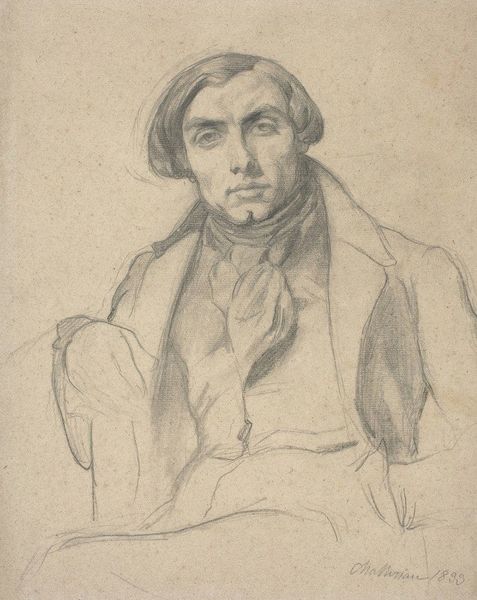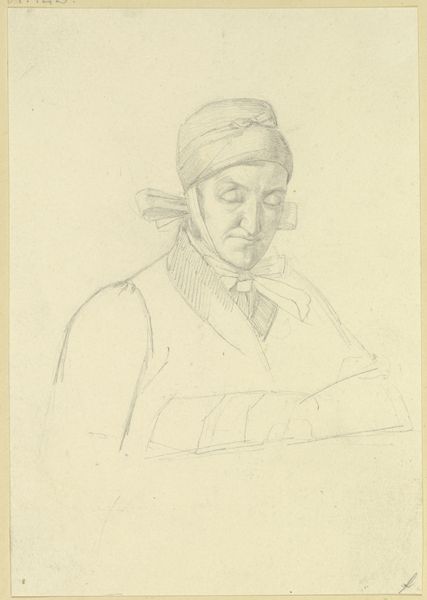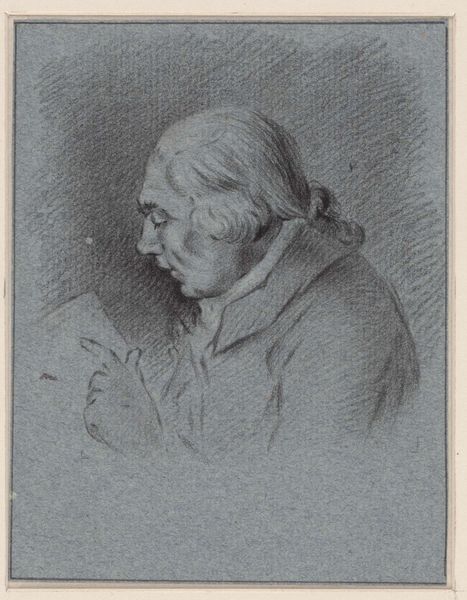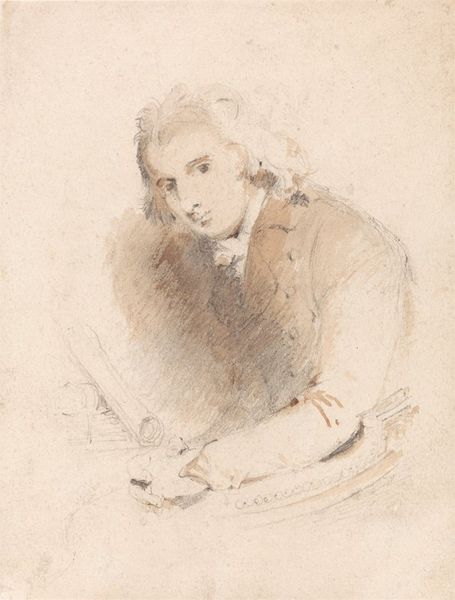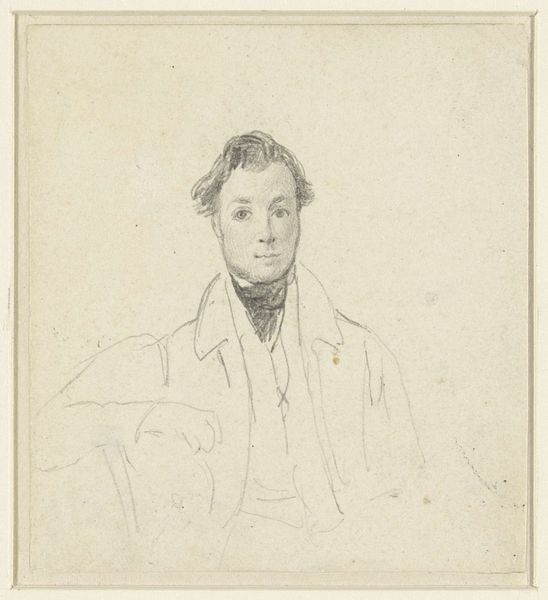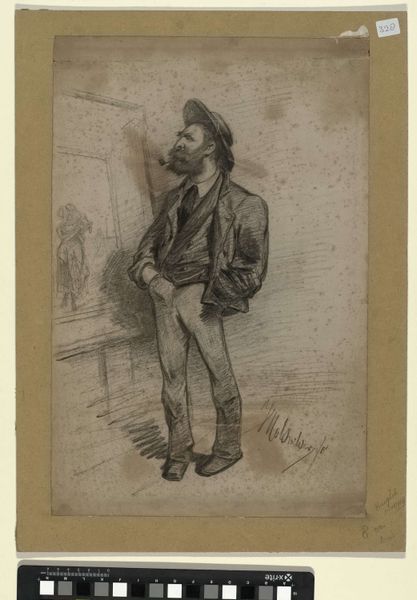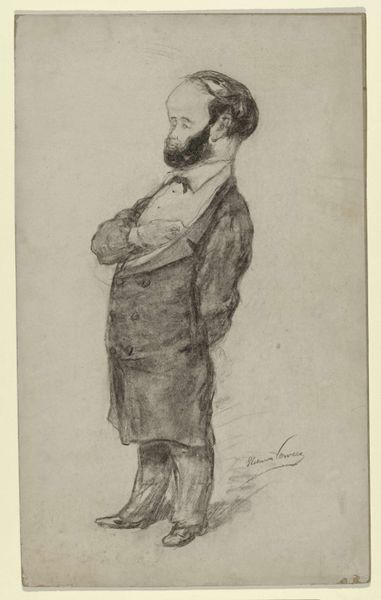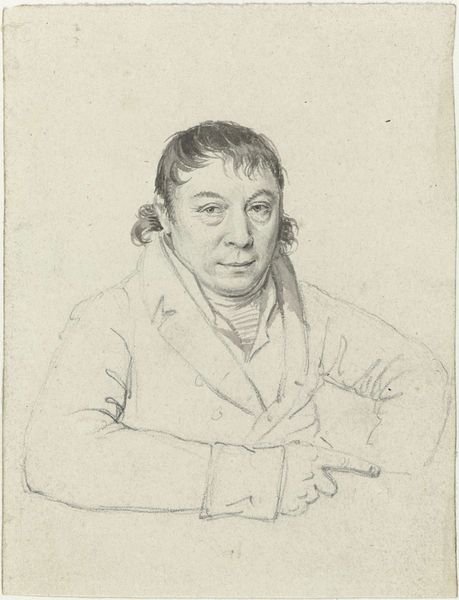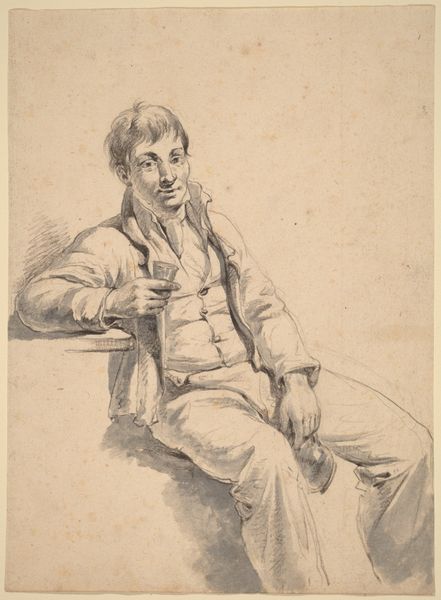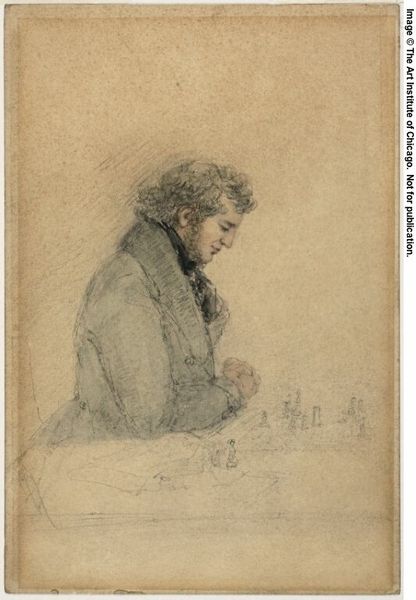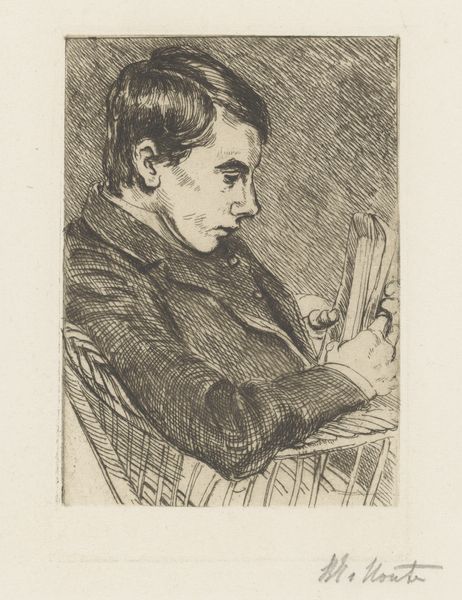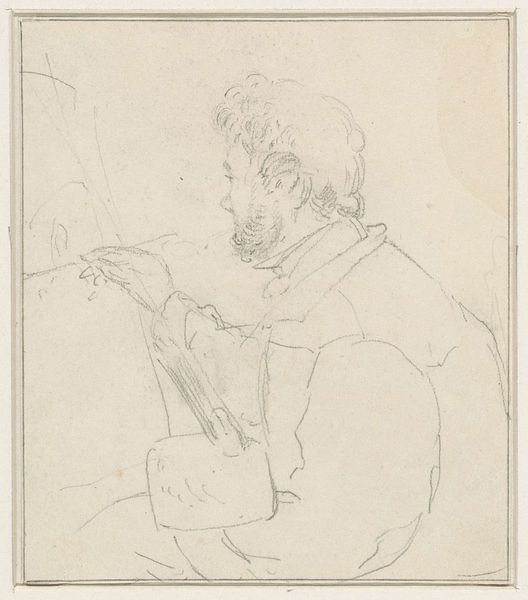
drawing, pencil
#
portrait
#
drawing
#
pencil sketch
#
pencil drawing
#
pencil
#
portrait drawing
#
academic-art
#
realism
Dimensions: height 153 mm, width 113 mm
Copyright: Rijks Museum: Open Domain
Editor: This is a pencil drawing by Gijsbertus Craeyvanger, dating from between 1830 and 1895, entitled "Portrait of Charles van Beveren." It has a quiet, almost melancholic mood to me. What draws your eye when you look at this work? Curator: The sitter's downward gaze and the presence of the letter invite questions about his interior life and perhaps his social position within a rapidly changing 19th-century world. Consider how the artist uses realism, an artistic movement of the time that sought to depict subjects as they appeared, without idealization, reflecting a shift toward democratization and individual representation. The image becomes more powerful when one thinks about societal expectations of men during that period. Do you perceive that vulnerability here? Editor: I think I do. There's a stillness that conveys that, but also the casual nature of his pose. Was the act of sketching and drawing portraits becoming more accessible during this period? Curator: Exactly. With the rise of the middle class and the professionalization of art, portraiture became less the sole domain of the elite. Pencil sketches allowed for greater affordability and accessibility, indicating a broader engagement with art across social strata. Think about who could have commissioned this work and why. What narrative does this context offer? Editor: So it could reflect changing social dynamics, not just personal expression? It’s almost like a democratization of portraiture happening right before our eyes, making art more attainable. Curator: Precisely. And through that lens, the image transforms into a mirror reflecting shifting societal norms and power dynamics of the era. Seeing it only as melancholic is denying its socio-historical impact, isn’t it? Editor: Absolutely. I’ll definitely view portraiture with broader perspectives moving forward. Curator: Good. It’s the intersections, those narratives between art, people and society, where art comes alive.
Comments
No comments
Be the first to comment and join the conversation on the ultimate creative platform.
